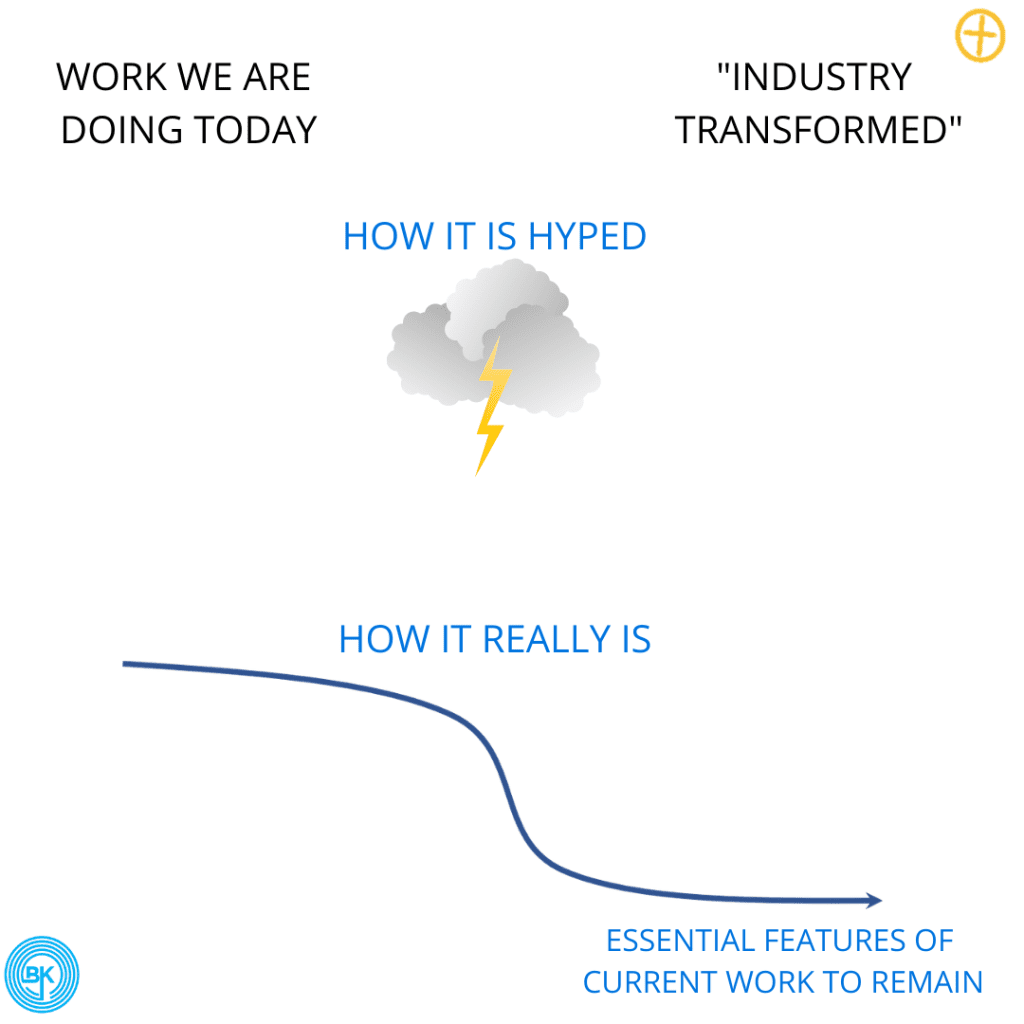– Bernie Kelly –
What’s NOT changing! A key insight to engaging teams and shaping industries.
All this talk about disruption, change, and transformation is in our face on so many fronts. In 2021, a day doesn’t go by without reference to patterns of life and work being impacted – for potential gain or pain.
Conversations at home, at work, down the street and on social media seem to have this theme.
Have you noticed how BINARY the conversation flows?
We tend to frame these conversations in absolute choice terms between the old or the new, pre or post, for or against.
We can’t just point to politics or the media. We – Executives, Industry Advisors, and Management – also feed the either / or mindset.
Think about conversations within the organisation that are framed as you either fully embrace the future or prefer to defend the past. It’s either one or the other.
- The introduction of new technology marks the death of what preceded it.
- A new operating methodology such as Agile, Lean Enterprise, or Customer Led Transformation will supersede Discipline / Functional departments or Command and Control management.
- The latest paradigms in Leadership development or Psychology will replace what came before.
Talk on industries being transformed is discussed like a lightening bolt strikes and everything is different. This hype is led from both sides of the either / or view. For example, the entrepreneurs and evangelists excited about a new technology with overblown promises at the same time as Opponents are unconvinced on the change talk of better times lost forever.

In reality, if we study industry transformations, while there will be a reshaping of the prevalent patterns there are always essential features of the current work that remain.
“To see the future more accurately think Both/And – Not Either/Or.”
~ Daniel Burrus
The binary frame is effective for selling papers or ‘clicks’, however it is not useful for leaders navigating turbulent times wanting to engage teams and be a part of the future shape of the industry.
Creating visions of the new order gets a lot of attention in Organisational Change Thought Leadership, however the other side of the coin – clarity on what remains – is often not mentioned.
What are the essential features of the current work that will remain when your industry is transformed?
A classic example from the computer industry is the Mainframe – for many years the predominant model. Think IBM absolute market dominance through the 1960’s and 1970’s. Then, over the following decades, becoming totally overshadowed by the PC, mobile phones and other mobile devices. However, the Mainframe remains a significant part of the industry as the infrastructure of the Cloud.
Is your leadership team clear and aligned on what’s NOT changing?
This is an important part of the conversation for successful transition.
I am passionate about seeing more successful transitions this decade than people and organisations caught suffering disruption.
Bernie

